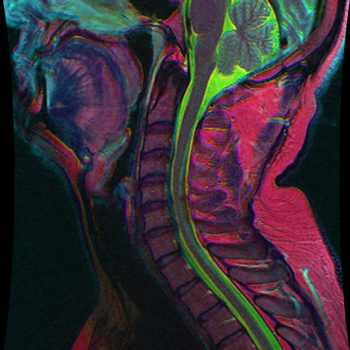
New Protocol May Decrease Hip Dislocation Risk
Researchers from NYU Langone Orthopedics, Hospital for Special Surgery, and Mayo Clinic have developed a hip-spine classification system for use in revision total hip arthroplasty that may help decrease the risk of recurrent instability.
Their work, “Evaluation of the Spine is Critical in Patients with Recurrent Instability after Total Hip Arthroplasty,” has been accepted for publication in an upcoming 2019 issue of The Bone & Joint Journal.
Co-author Jonathan M. Vigdorchik, M.D., at the time of the study an orthopedic surgeon in the Division of Adult Reconstructive Surgery at NYU Langone Orthopedics in New York City, noticed a trend which, as he explained to OTW, prompted this study. “In clinical practice, being at a tertiary referral center, we get many referrals for revision THA [total hip arthroplasty]. As we started looking at our revisions for dislocation, we began noticing a trend—patients all had spine fusions or spines that were in bad shape. So, this launched us on a research path about spine fusions and hip replacement.”
The researchers collected data on 111 patients undergoing revision THA for recurrent instability and matched 1:1 to 111 revisions specifically performed for instability not using this protocol (the control group).
Dr. Vigdorchik, now an orthopaedic hip and knee replacement surgeon at Hospital for Special Surgery in New York, told OTW, “We found that spinal fusion, and also the higher number of spinal levels fused, caused higher dislocation rates. We also found that patients with spinal deformity had higher rates of dislocation.”
“So, we had a combined spine surgeons and hip surgeons conference to discuss. As a hip surgeon, I started looking at the hip and the pelvis like a spine surgeon and began noticing certain trends. When we applied this to dislocating hips, it became very clear why they were dislocating and explains a large group of patients where the doctors could never figure out why the X-rays looked good (or so they thought).
“But they were just looking at the wrong X-rays. So that is why I came up with this protocol, to teach them the right X-rays to do and then what to do with what they found.”
“Revising a hip that is dislocating has a really high complication rate, especially recurrent dislocation.
From : www.ryortho.com/




